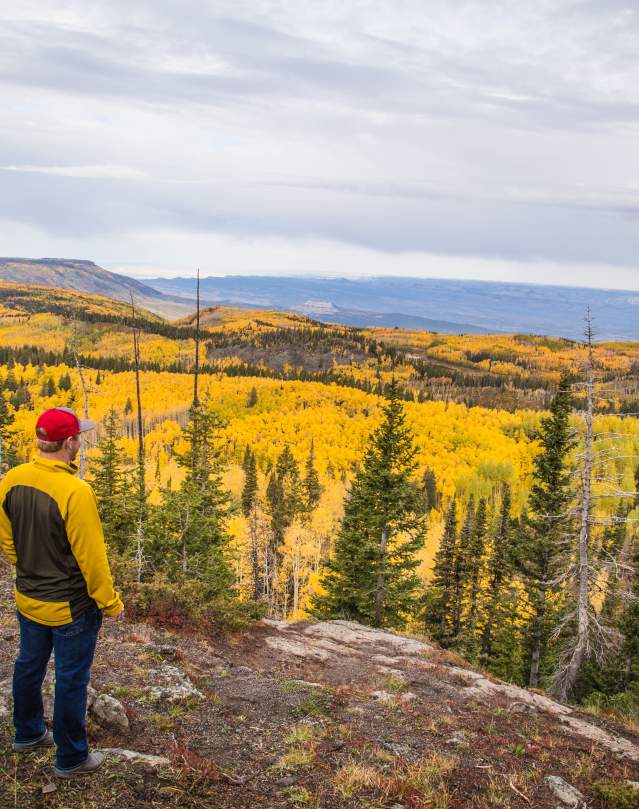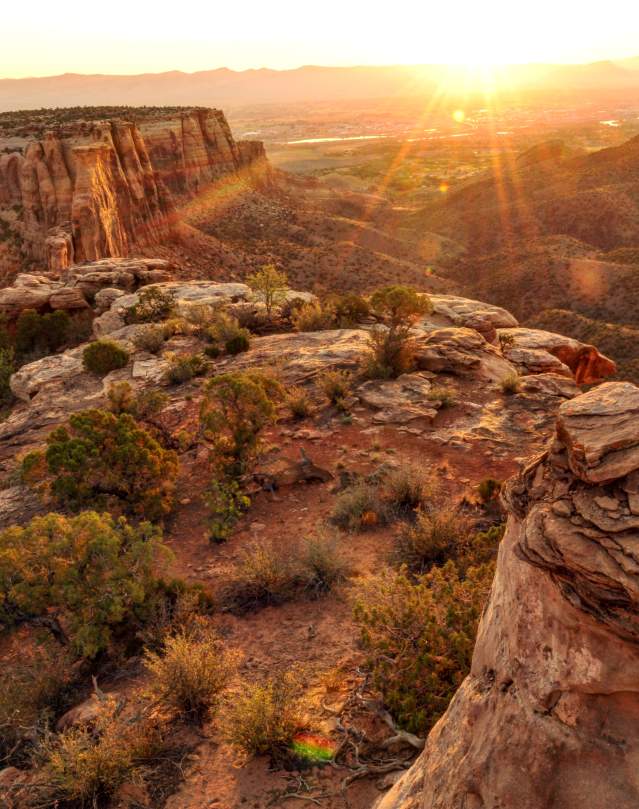3 Minute Read
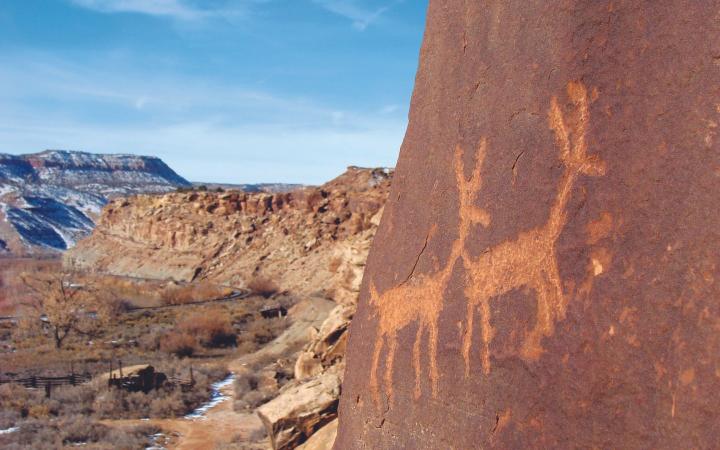
Petroglyphs are historic and prehistoric rock carvings that are found mostly on cliffsides or in caves that have been protected from erosion over years by the rock overhangs. These ancient carvings exist all over the world and are a fascinating relic of prehistoric people and how they lived.
There is a difference between petroglyphs and pictographs, which are paintings in the rock as opposed to carvings. Petroglyphs often depict images of hunting, gathering, and daily life in archaic and formative periods, providing an insight into how people lived thousands of years ago.
In Colorado, there are many places where visitors can see these petroglyphs up close and personal, making for an incredibly exciting and educational experience.
Here are five of the best places to explore petroglyphs in Colorado:
1. Chimney Rock National Monument
The Chimney Rock National Monument can be found in the southwestern part of Colorado, at the southern edge of the San Juan Mountains. This area was once home to the Ancestral Puebloans of the Chaco Canyon about a millennium ago.
This is an incredibly rich area in terms of archeology, featuring hundreds of ancient buildings, including a great kiva (a large structure used for ceremonies), a pit house, and a multi-family dwelling. The area is located in beautiful surroundings offering opportunities to hike, enjoy nature, and of course see some petroglyphs. There are no entrance or access fees, but guided tours are available for purchase.
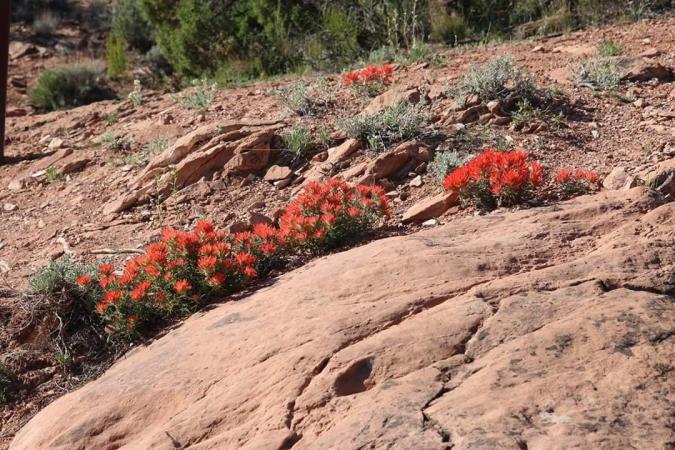
2. Mesa Verde National Park
Mesa Verde National Park in Southwest Colorado is home to some of the best-preserved ancient sites in the entire United States. This area was once inhabited by the Ancestral Puebloan people, who lived here for over 700 years between 600 and 1300 CE.
There are over 5,000 known archeological sites in the park, making it the perfect place to experience this ancient culture in depth. For those specifically hunting for petroglyphs, there is a 2.4-mile hike you can undertake — Petroglyph Point Trail — which passes an enormous petroglyph panel on the canyon wall.
3. Falls Creek Archaeological Area
The Falls Creek Archaeological Area, also known as Falls Creek Rock Shelters, is located in the town of Durango, Colorado. This important archeological area contains some extremely well-preserved remains dating back to the Ancestral Puebloan people of about 400 BCE to 400 CE.
This was a period in time that saw an increased reliance on farming and agriculture, and explorers today can experience the relics of this era — rock walls adorned with stunning varieties of art depicting animals, humans, and geometric imagery.
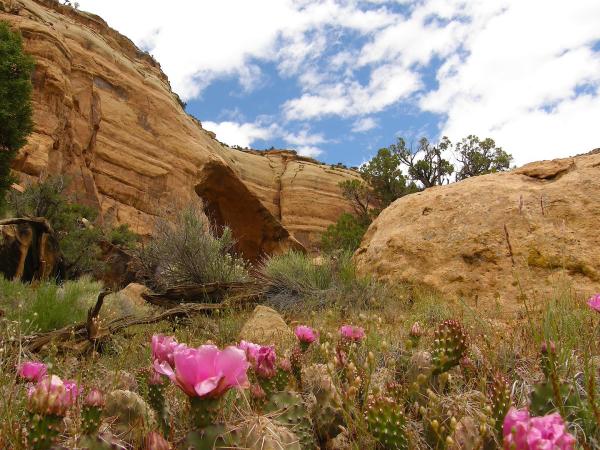
4. Canyon of the Ancients National Monument
The Canyon of the Ancients National Monument is located in southwestern Colorado, near the City of Cortez. It boasts the highest known archaeological site density in the United States, with more than 6,300 separate sites available to explore.
Here you can find almost anything — remains of villages, houses, reservoirs, cliff dwellings, shrines, and, of course, petroglyphs. This region was inhabited by humans (such as the Northern Ancestral Puebloan culture, or Anasazi) for 10,000 years, which is the reason for its incredibly varied and rich historical legacy.
5. McDonald Creek Cultural Area
The McDonald Creek Cultural Area is found in the McInnis Canyons National Conservation Area, just to the west of Grand Junction, Colorado.
The area dates back to the Fremont Indian people who lived there 1,000 years ago and is home to four spectacular petroglyph panels. You can explore this area and marvel at the ancient artwork, but be careful not to touch the carvings as the oil on your hands can cause damage to the fragile sandstone.
Learn more about experiencing the petroglyphs at McDonald Creek Cultural Area near Grand Junction.
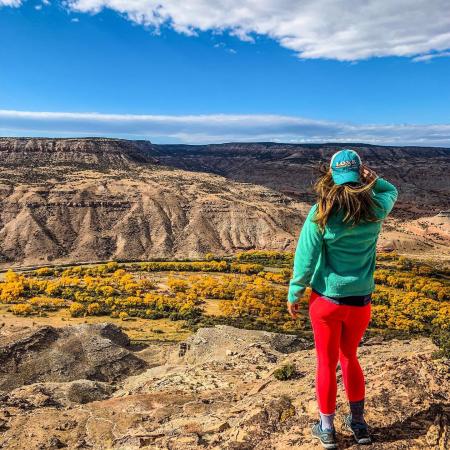
6. Escalante Canyon
Escalante Canyon in the Dominguez-Escalante National Conservation Area (NCA) offers an easy hike with opportunities to see ancient structures and petroglyph panels, including carvings of bighorn sheep. This NCA comprises 210,172 acres and contains vertebrate fossils, as well as paleontological and geological resources that span 600 million years of history. The trail itself is just over a half-mile round trip, making this hike a great chance for the whole family to experience the area’s rich history.
Explore Petroglyphs from Grand Junction, Colorado
Grand Junction, and Colorado in general, is a fantastic destination for anyone interested in learning more about ancient cultures by experiencing the remains of their settlements and their artwork first-hand.
Grand Junction offers easy access to some truly stunning and extremely well-preserved petroglyphs that can be explored as part of a hike through gorgeous natural surroundings. Discover more opportunities to experience the history and culture of the West in Grand Junction.
Check pages 16-17 of the Official Grand Junction Visitor Guide for details on several Grand Junction hikes.

